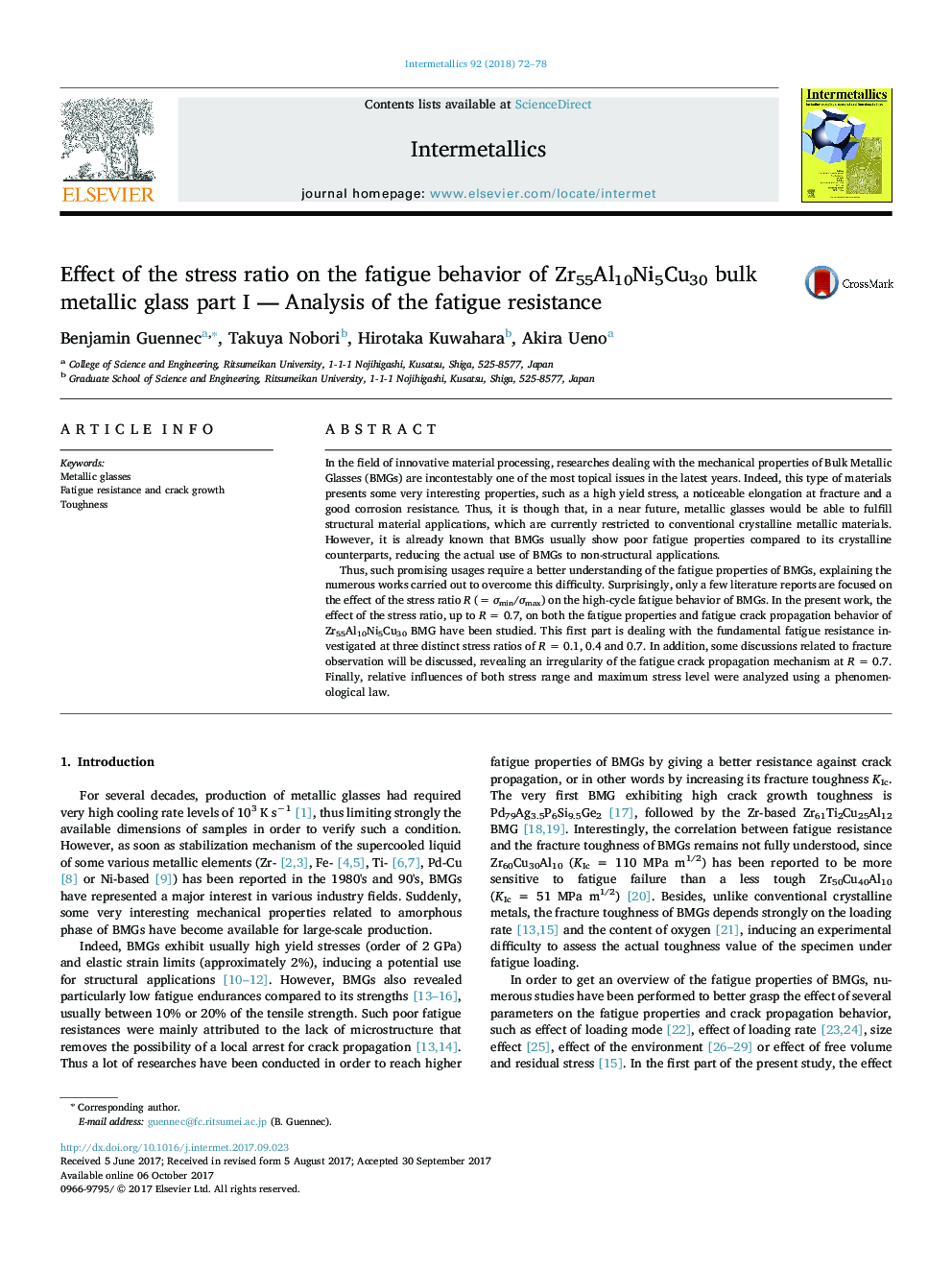| Article ID | Journal | Published Year | Pages | File Type |
|---|---|---|---|---|
| 5457482 | Intermetallics | 2018 | 7 Pages |
â¢Effect of stress ratio R was studied in the range from 0.1 to 0.7.â¢Fatigue limit at 107 cycles is almost insensitive to stress ratio.â¢Kmax influence on fatigue life overcomes ÎK one at R = 0.7.â¢Specific “gutter-like” patterns are found on the fracture surface at R = 0.7.â¢Cyclic- and time-dependency of fatigue behavior were analyzed.
In the field of innovative material processing, researches dealing with the mechanical properties of Bulk Metallic Glasses (BMGs) are incontestably one of the most topical issues in the latest years. Indeed, this type of materials presents some very interesting properties, such as a high yield stress, a noticeable elongation at fracture and a good corrosion resistance. Thus, it is though that, in a near future, metallic glasses would be able to fulfill structural material applications, which are currently restricted to conventional crystalline metallic materials. However, it is already known that BMGs usually show poor fatigue properties compared to its crystalline counterparts, reducing the actual use of BMGs to non-structural applications.Thus, such promising usages require a better understanding of the fatigue properties of BMGs, explaining the numerous works carried out to overcome this difficulty. Surprisingly, only a few literature reports are focused on the effect of the stress ratio R (= Ïmin/Ïmax) on the high-cycle fatigue behavior of BMGs. In the present work, the effect of the stress ratio, up to RÂ =Â 0.7, on both the fatigue properties and fatigue crack propagation behavior of Zr55Al10Ni5Cu30 BMG have been studied. This first part is dealing with the fundamental fatigue resistance investigated at three distinct stress ratios of RÂ =Â 0.1, 0.4 and 0.7. In addition, some discussions related to fracture observation will be discussed, revealing an irregularity of the fatigue crack propagation mechanism at RÂ =Â 0.7. Finally, relative influences of both stress range and maximum stress level were analyzed using a phenomenological law.
